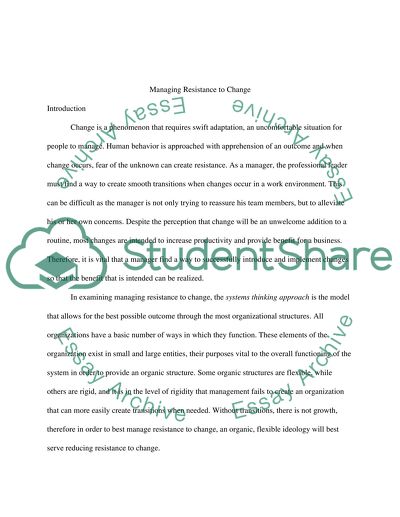Cite this document
(“Managing Resistance to Change Research Paper Example | Topics and Well Written Essays - 3000 words”, n.d.)
Retrieved from https://studentshare.org/family-consumer-science/1408467-managing-resistance-to-change
Retrieved from https://studentshare.org/family-consumer-science/1408467-managing-resistance-to-change
(Managing Resistance to Change Research Paper Example | Topics and Well Written Essays - 3000 Words)
https://studentshare.org/family-consumer-science/1408467-managing-resistance-to-change.
https://studentshare.org/family-consumer-science/1408467-managing-resistance-to-change.
“Managing Resistance to Change Research Paper Example | Topics and Well Written Essays - 3000 Words”, n.d. https://studentshare.org/family-consumer-science/1408467-managing-resistance-to-change.


